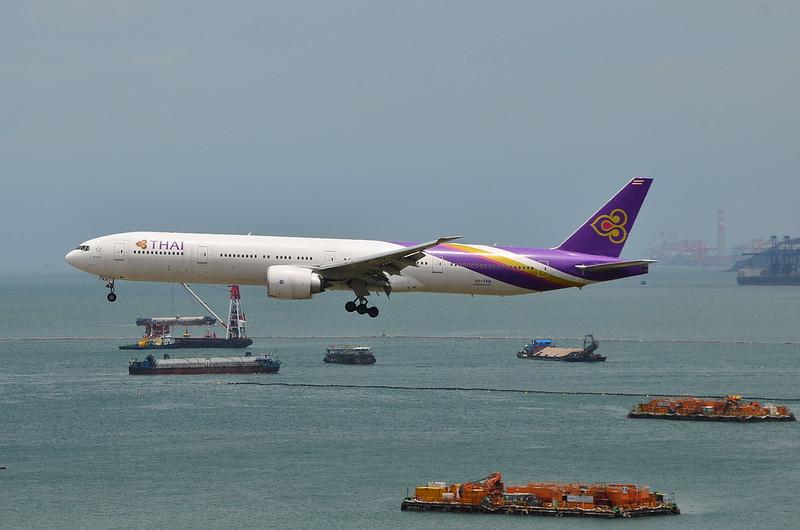
Using data to flag engine reliability issues is a promising tool for predictive analytics, but the ongoing probe into a GE Aviation GE90 engine failure shows how precise analysis can help isolate engines for checks linked to airworthiness issues.
The FAA issued an emergency airworthiness directive (EAD) Jan. 17 calling for removal of high-pressure turbine (HPT) interstage seals from 16 GE90-115Bs identified by serial number. The EAD and a related GE service bulletin issued days earlier stem from the ongoing probe into the October 2019 failure of a GE Aviation GE90-115B on a Thai Airways 777-300ER. The flight was departing Bangkok for Zurich when the crew rejected the takeoff at low speed. Debris from the damaged engine impacted the 777’s fuselage and other engine.
Soon after the incident, GE targeted eight engines operated by five airlines for HPT interstage seal checks, which regulators—led by the FAA—mandated in October 2019. The January action targeted a narrower population: two airlines and eight aircraft that operated similar mission profiles that may be contributing to the failure risks. A source with knowledge of the situation told Aviation Week that the operating profile includes shorter routes, shorter runways, and turning the aircraft more quickly than a typical 777 long-haul mission would.
GE Aviation, citing the ongoing investigation, declined to provide details beyond what FAA published in the directives. But the specificity of GE’s instructions points to the company using its vast vault of engine data to analyze the issue and identify common trends between the failed engine and others in the fleet.
GE used a similar approach to target CFM LEAP-1Bs for inspections following a March 2019 failure on board a Southwest Airlines 737 MAX being ferried from Orlando, Florida to Victorville, California.
GE quickly linked the failure to coking—deposits of evaporated fuel and other material on fuel nozzles that lead to uneven temperature flow regions within the combustion chamber and hot spots within the HPT. These hot spots can cause premature wear. Within hours of the failure, the company analyzed the engine’s operating history and compared it against data from each of the other 1,560 LEAPs in service.
Aware that coking is a common issue with gas turbine engines, GE already had rotable pools of fuel nozzles ready to be swapped at certain thresholds. Following the Southwest failure, GE revised its analytics and reduced those thresholds. Engines exceeding the revised limits were recommended for inspections.
